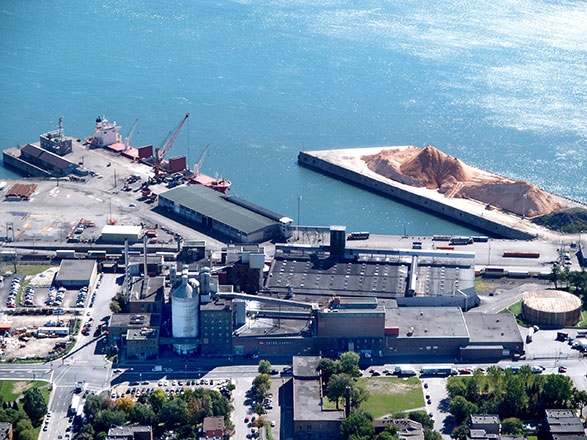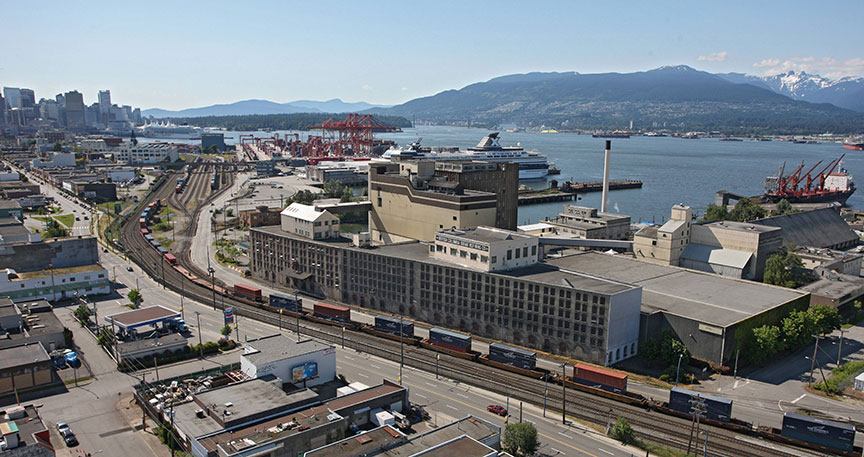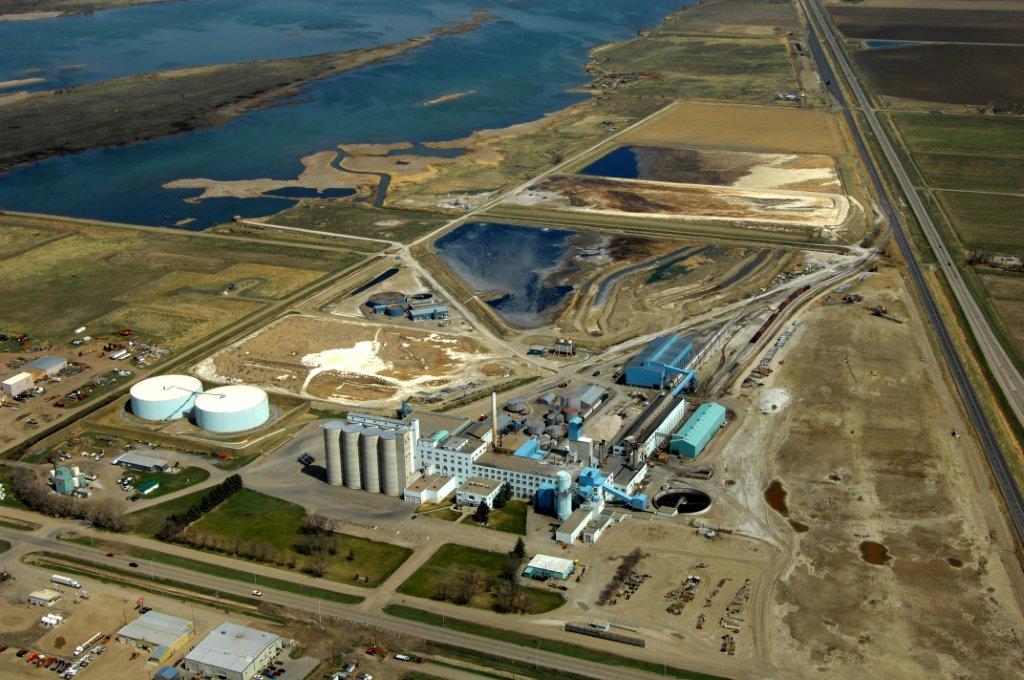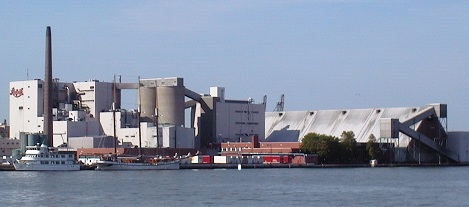Canada's sugar industry is an integral part of Canadian history, and a value-added success story.
The first refinery was established in 1818, half a century before confederation. From its earliest roots, the Canadian sugar industry has honoured its commitment to high quality and low prices - a commitment that continues to benefit Canadians today.
A Proud Canadian Heritage
"The proprietors of this establishment inform the public that they manufacture sugar equal to, if not superior, in quality, and cheaper than can be imported."
That was how the first sugar refinery in Canada was advertised in a local Halifax newspaper more than 175 years ago. Until then, Canada had been dependent on imports of poor-quality raw sugar or expensive refined sugar. As the population increased, so did the demand for a steady supply of low cost refined sugar for both consumers and the emerging industries that needed sugar to make their food products. While attempts to sustain refining operations in Nova Scotia proved unsuccessful, the demand for a home industry continued to grow. In 1854, a refinery was established in Montreal, taking advantage of the city's deep port to receive raw cane sugar shipments from the Caribbean. A second refinery was built in Montreal in 1879.
The arrival of the Canadian Pacific railroad on the West Coast opened new opportunities for the industry. In 1890, a refinery was established in Vancouver, ideally located to receive shipments of raw cane sugar from Pacific regions and to access Canada's rapidly developing western markets.
Around the same time, the first attempts were made to establish a sugar beet industry in Canada. While sugar beets were successfully grown in Ontario and Quebec for many years, the Prairie Provinces proved to be most ideally situated, inland from cane refineries, providing the economic stimulus for a viable beet sugar industry in Alberta and Manitoba.
In 1912, a group of Montreal businessmen built a cane refinery on Canada's east coast in Saint John, New Brunswick. Later, the opening of the St. Lawrence Seaway led to the establishment of a cane refinery in Toronto, the doorstep to a rapidly growing consumer and industrial market.
History of Canada's Sugar Companies
Currently, there are three cane sugar refineries and one sugar beet factory in Canada. The cane refineries are located in Vancouver (Rogers Sugar), Toronto (Redpath Sugar Ltd) and Montréal (Lantic Inc). The sugar beet factory (Rogers Sugar) is located in Taber, Alberta.
Lantic Inc. came into existence after the merger of Lantic Sugar Limited and Rogers Sugar Ltd. in June 2008. Prior to this merger, each facility experienced extensive transformations, which resulted in the successful establishment of Lantic Inc. today.
For company contact information and locations, click here.
Lantic Sugar
Lantic Sugar has its roots with the Acadia Sugar Refining Co., a Scottish incorporation, originally formed from a consolidation of three refinery operations in Nova Scotia and succeeded in 1912 by Atlantic Sugar Refineries when it built a cane sugar refinery in Saint John, New Brunswick. St. Lawrence Sugar’s original cane refinery was built on the shores of the St. Lawrence River in 1888. Over the years, the building and processing facilities were frequently upgraded. In 1981, Lantic Sugar began a program of diversification and rationalization that concluded with the purchase of St. Lawrence Sugar in Montreal in 1984.
In 2000, Lantic consolidated its refining operations in Montreal and closed the Saint John plant. At the same time, the company reinvested in the Montreal facility, with a $120 million expansion and upgrade that doubled the plant’s capacity and the refinery continues to serve the central and eastern Canadian markets today. Also see: History of the Montreal Refinery.
In August, 2023, Rogers Sugar announced that it is investing approximately $200 million to increase the production capacity of the Lantic Montreal plant by approximately 20%, or 100,000 metric tonnes. This includes investments in sugar refining technology and equipment, as well as logistical infrastructure at Lantic’s Montreal sugar refinery and Toronto distribution centre. The incremental production and logistics capacity is expected to be in service in approximately two years.

Lantic Sugar, Montreal, Refinery Established in 1888
Rogers Sugar
Rogers Sugar was established in 1890 by the entrepreneurial B. T. Rogers. Recognizing the high cost of transporting refined sugar by rail from Montreal to Vancouver, Rogers seized the opportunity for the west coast to refine its own sugar. Vancouver was strategically located to access raw sugar shipments from Pacific origins and send refined sugar to Canada's western population centres. Rogers' refinery was Vancouver's first major industry not based on logging or fishing. The Vancouver refinery is an efficient, productive facility to this day, and $1 million is invested annually in this plant. Also see: History of Rogers Sugar.

Rogers Sugar, Vancouver, refinery established in 1890
Rogers' involvement in the beet sugar industry dates back to the 1930's with factories at Raymond and Picture Butte in Alberta. Rogers' Winnipeg plant operated from 1940, but was closed in 1997 as a result of severely restricted access to the US market. Today's remaining operation is in Taber, Alberta, built in 1950. A $40 million expansion completed in 1999 increased this plant’s capacity by 50%. Also see: Rogers Sugar Taber Plant.

Rogers Sugar, Taber Alberta, established in 1950
Redpath Sugar Ltd.
Redpath Sugar Ltd. began as The Canada Sugar Refining Co. Ltd., in Montreal, in 1854. The company was the brainchild of John Redpath, an enterprising Scotsman who had seen an opportunity for Canada to produce its own refined sugar.
In 1930, the company merged with The Dominion Sugar Company of Chatham, Ontario with plants in Wallaceburg and Chatham, concentrating on the production of beet sugar. Then, in 1959, the renamed Redpath Sugars Ltd. opened its landmark refinery on the Toronto waterfront, which is still in operation today. By 1980, all production of sugar had been consolidated at the Toronto refinery. In 1998, Redpath completed a major expansion and modernization of this operation, investing $40 million and increasing plant capacity by 75%. Redpath Sugar Ltd. is now part of the ASR Group. Also see: Redpath Sugar.
In December 2023, Redpath Sugar announced the successful expansion of its Toronto cane sugar refinery as a strategic response to the growth in demand in Canada’s thriving food manufacturing sector. Redpath’s investment in the state-of-the-art initiative increased the refinery’s capacity by approximately 65,000 metric tonnes. In addition to increasing the capacity of Canada's largest sugar refinery, the expansion project also improved process efficiencies and sustainable practices that contribute to Redpath Sugar's sustainability goals. This is the first phase of multiple projects that Redpath is considering to address the growing Canadian market. Continuous improvement projects implemented alongside the refinery expansion project are also yielding impressive increases in daily output while conserving water and energy.

Redpath Toronto refinery, established in 1959


